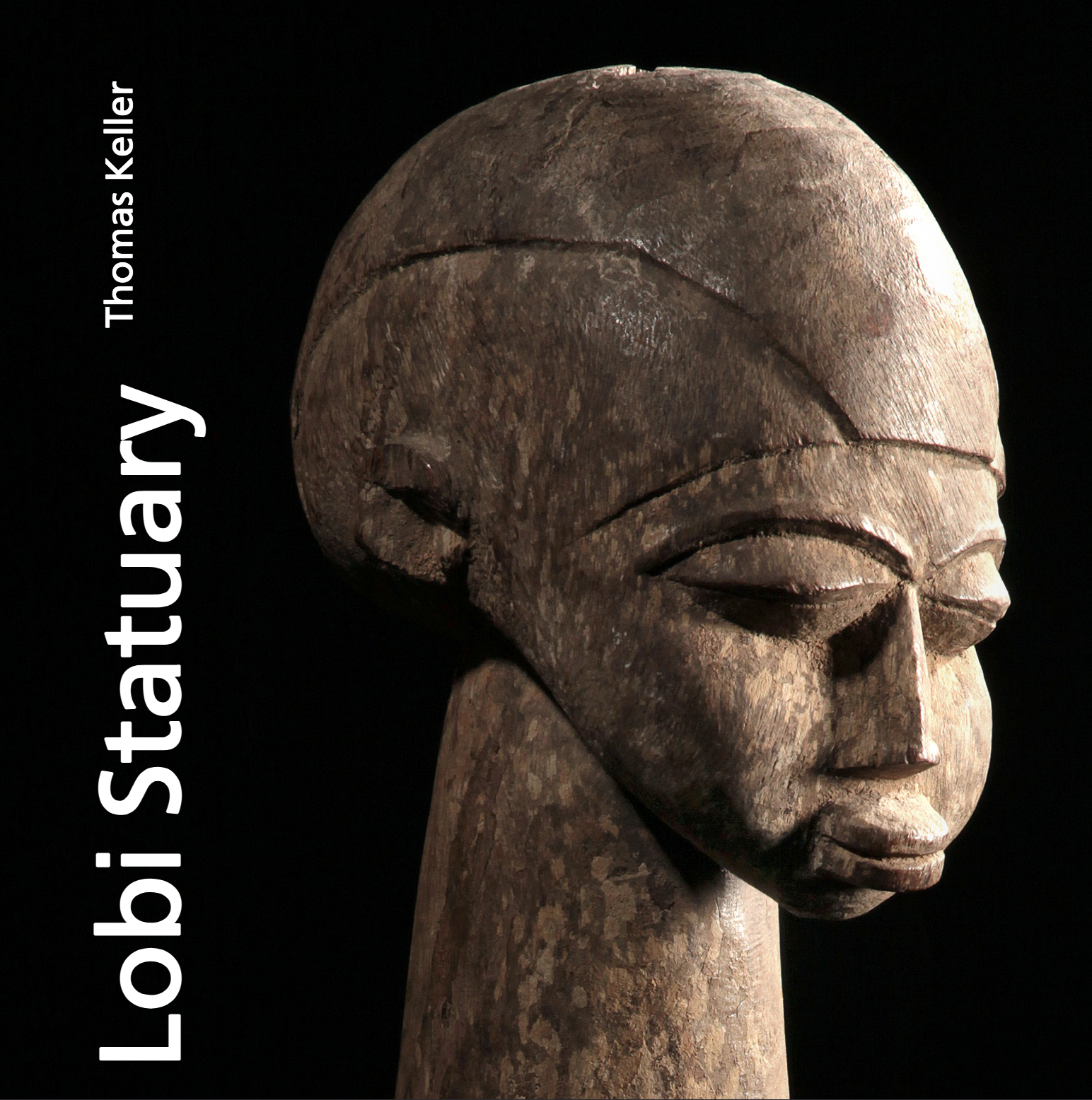wolfgang-jaenicke
A Lobi headstake
A Lobi headstake
Couldn't load pickup availability
A Lobi headstake (baathil / pole head), Kampti village, Poni province (Burkina Faso). Wood, traces of kaolin pigments.The object is a carved human head mounted on an elongated, post-like neck intended for insertion into the ground; the facial treatment is schematic with almond-shaped eyes, a trapezoid nose, a small pointed mouth and a relief-like coiffure forming a cap with a crest.
Such heads were associated with household guardian altars and ritually planted outside domestic compounds where they functioned as votive and protective markers; they were kept indoors when not exposed during certain dances or rites; incl. stand
The typology and use: stake-headed votives form one of several Lobi sculptural modes (single standing figures, Janus images, and head-on-stakes) and appear across the Poni region; carver-specific variants are recognised by local specialists and by museum/dealer descriptions through recurring features such as the elongated “neck” shaft, compact facial plane and small incised mouth. Photographic and auction records show a consistent material patina indicating long-term handling, occasional scraping or pigment residues, and the practical function of being planted as a guardian pole.
Provenance note: comparable examples are documented in European collections and dealer catalogues originating from Kampti and surrounding Poni villages; ethnographic film records and short sequence analyses confirm the occasional outdoor use during dance ceremonies and indoor storage practices.
The headstake belongs to a class of sculptural markers that combine a compactly modelled human head with an extended post designed for insertion into the ground. The facial plane is reduced to essential signs: oval eyes cut into a slightly convex mask-like surface, a straight nasal ridge, a small rectilinear mouth and a coiffure rendered as a tight cap or ridged crest. The elongation of the neck-post is not an anatomical feature but the functional element that allowed the object to be positioned at the threshold of a compound or near a family altar.
In the Kampti area these markers acted as tutelary presences, mediating between domestic space and the domain of territorial spirits. Their placement—temporarily outdoors during rites and stored indoors at other times—corresponds to the general Lobi practice of activating certain sculptures only within restricted ritual contexts. Patina characteristics, including darkened surfaces, residual clay and pigment accumulation, support the interpretation of repeated handling and occasional exposure to libations.¹
Typological parallels from neighbouring Poni villages indicate a coherent regional idiom distinguished by the strict symmetry of the face, the absence of extended body modelling and the emphasis on the pole’s verticality as a sign of rootedness and protective stability.²
¹ For general ritual contexts of Lobi altar sculpture see Piet Meyer, Lobi. Statuen und Kultobjekte aus Burkina Faso, Zürich 1981.
² Comparable headstakes from Kampti and Gaoua regions are published in Meyer 1981, plates 64–68.
References
[1] Product description and catalogue entry for a Kampti-region Lobi head, Wolfgang-Jaenicke collection. Galerie Wolfgang Jaenicke
[2] Dealer/catalogue descriptions noting ritual planting and guardian-altar function of Lobi pole heads.
[3] Scholarly/curatorial synthesis distinguishing Lobi statuary types (single figures, Janus images, head-stakes).
[4] Auction and dealer records describing indoor storage, ritual use and film-based analysis of Lobi head-stakes from the Kampti/Poni area.
Height: 58 cm incl. stand
Weight: 4,1 kg incl. saand
























